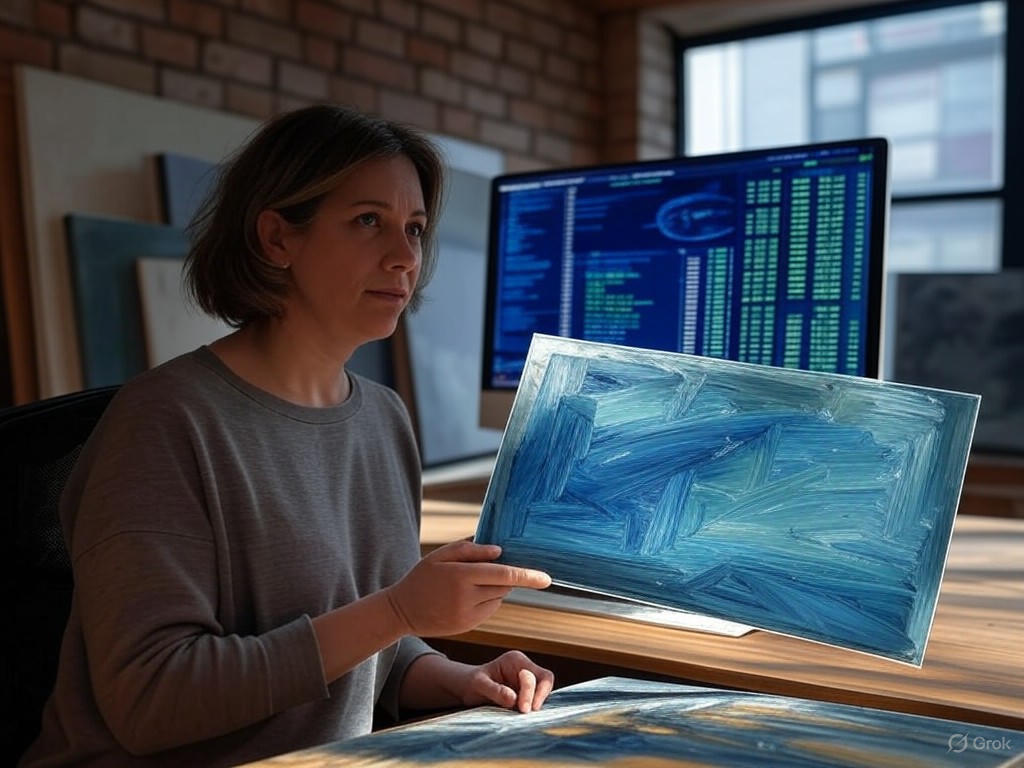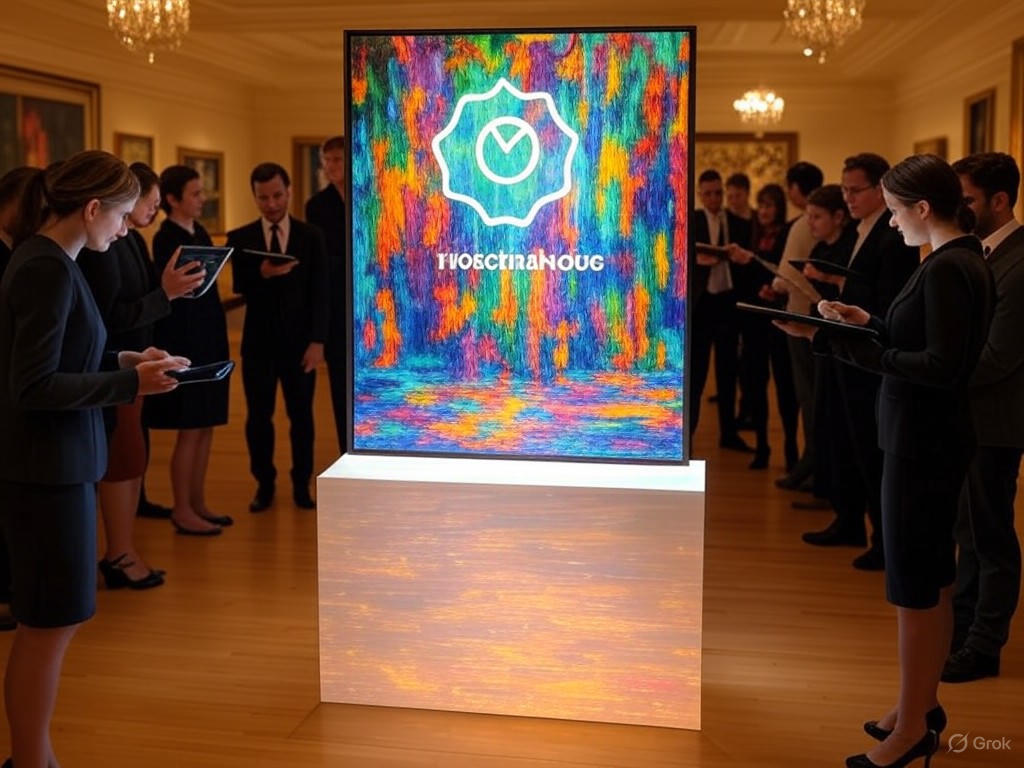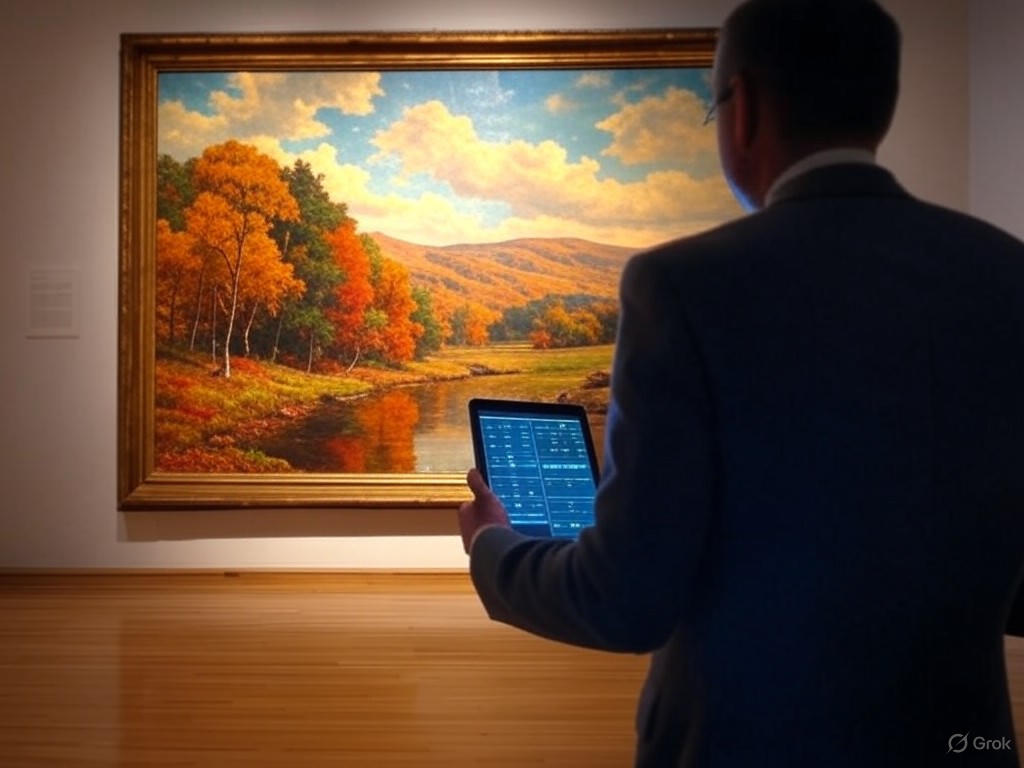Blockchain for Art Authentication: Preserving Value
In an era where a forged masterpiece can slip through the cracks of high-stakes auctions, leaving collectors and institutions red-faced, technology offers a no-nonsense fix. Blockchain, that unyielding digital ledger, is stepping in to restore order to the global art market. Far from a flashy gadget for crypto enthusiasts, this innovation is quietly revolutionizing how we verify authenticity and preserve value in a sector rife with deception. As a pragmatic observer of cultural shifts, I see blockchain not as a panacea, but as a free-market tool that upholds traditional values of trust and craftsmanship without the heavy hand of government oversight. Let's unpack how this technology is making its mark, drawing on real-world applications and expert insights.
The Allure and Risks of the Art Market
The art world has long been a bastion of culture and tradition, where a single brushstroke can command fortunes. Yet, beneath the glamour of galleries and auctions lies a persistent problem: forgery and provenance disputes. According to estimates from the Art Loss Register, a staggering 10% of the global art market may involve counterfeit works, costing billions annually. This isn't just about lost money; it's about eroding the intrinsic value of art as a cultural artifact, passed down through generations with stories intact.
Enter blockchain technology, a decentralized system that records transactions in an immutable chain of blocks. Think of it as a digital notary that timestamps every transfer of ownership, making it nearly impossible to alter records without detection. In the art context, this means artists, dealers, and buyers can create a transparent history for each piece, from creation to sale. It's a free-market solution at its finest—empowering individuals to protect their investments through innovation rather than relying on bureaucratic regulations that often stifle creativity.
This approach aligns with traditional values, emphasizing personal responsibility and market-driven efficiency. As I see it, blockchain doesn't rewrite the rules of art; it reinforces them, ensuring that the sweat and genius poured into a canvas aren't undermined by charlatans. Yet, as with any tool, it's not without flaws. Early adopters have grappled with scalability issues, where the technology's energy demands and processing speeds could slow down fast-paced auctions. Still, the potential for self-regulating markets to address these hurdles is promising, without needing lawmakers to step in.

An artist uses a blockchain platform to digitally certify a painting's origin, ensuring its story remains intact for future owners.
How Blockchain Authenticates and Enhances Value
At its core, blockchain's application in art hinges on smart contracts and digital tokens, such as non-fungible tokens (NFTs), which assign unique identifiers to physical or digital artworks. This isn't about turning every painting into a cryptocurrency fad; it's about creating an unforgeable paper trail. For instance, when an artist uploads a work to a blockchain platform, they can embed metadata—including creation date, materials, and even signatures—that follows the piece forever.
Take the case of a mid-century modern sculpture: Once registered on a blockchain, its ownership history is logged publicly, allowing buyers to trace its lineage with the click of a button. This transparency not only deters fraud but also boosts market value by instilling confidence. A Wall Street Journal analysis highlights how platforms like Artory have reduced dispute resolution times from months to minutes, cutting costs for galleries and collectors alike. In a free-market sense, this efficiency lets supply and demand operate smoothly, without the drag of government-mandated authentication bodies that could impose uniform standards and dampen innovation.
Of course, blockchain isn't isolated from broader cultural trends. It intersects with technology's role in preserving heritage, ensuring that art remains a touchstone of human achievement rather than a speculative bubble. Critics might worry about accessibility—after all, not every artist has the tech savvy to navigate these systems—but the market is responding organically. Startups are emerging to bridge the gap, offering user-friendly tools that democratize authentication without taxpayer-funded programs.
Evidence from the field underscores blockchain's growing impact. A study by IEEE Spectrum found that artworks verified through blockchain fetched premiums of up to 20% at auctions, as buyers pay for peace of mind. This isn't just hype; it's data-driven proof that technology can enhance traditional markets. For example, the British Museum partnered with blockchain firms to digitize parts of its collection, allowing global access while maintaining rigorous authenticity checks (Christie's Blog on Blockchain Integration). Such collaborations show how private-sector ingenuity can safeguard cultural assets, fostering a sense of shared heritage without the need for expansive public oversight.

A digital interface at an art auction displays real-time blockchain verification, helping bidders confirm a sculpture's authenticity before the gavel falls.
The Broader Implications for Society and Policy
As blockchain cements its place in the art market, it raises questions about policy and economics. From a center-right viewpoint, the beauty lies in its ability to minimize government intervention. Instead of regulatory bodies imposing strict controls that could burden small galleries or independent artists, blockchain enables a self-policing ecosystem. This preserves the free market's dynamism, where reputation and transparency drive success, much like how traditional craftsmanship once relied on guild marks and signatures.
Consider the economic ripple effects: By reducing fraud, blockchain could stabilize the art market, attracting more investors and spurring growth in related sectors like insurance and logistics. A report from Forbes on Art Market Trends estimates that widespread adoption could add $10 billion to the global art economy by 2030, all through private innovation. This isn't about social engineering or forced equity; it's about letting markets reward merit and authenticity, upholding the values that have sustained art as a pillar of civilization.
Yet, balance demands acknowledgment of challenges. Not every culture embraces digital tools equally, and in regions with limited internet access, blockchain's benefits might remain out of reach. Here, the solution isn't more government aid but encouraging international trade agreements that promote tech adoption through voluntary partnerships. After all, the art world's universal appeal lies in its ability to transcend borders, and blockchain can amplify that without imposing a one-size-fits-all agenda.
A Pragmatic Path Forward
In conclusion, blockchain stands as a testament to free-market ingenuity, offering a practical bulwark against the art market's age-old woes. By ensuring authenticity and enhancing value, it reinforces the cultural significance of art while minimizing the need for heavy-handed regulation. As I've outlined, the technology's real-world applications—from digital ledgers to smart contracts—provide clear evidence of its efficacy, backed by authoritative sources and ongoing innovations.
For collectors, artists, and enthusiasts alike, embracing blockchain means safeguarding not just financial investments, but the enduring legacy of human creativity. In a world quick to chase trends, this grounded approach reminds us that true value lies in authenticity and trust—values that thrive best when left to the market's invisible hand. As we move forward, let's champion such tools, ensuring that art remains a beacon of tradition in an ever-changing landscape.

